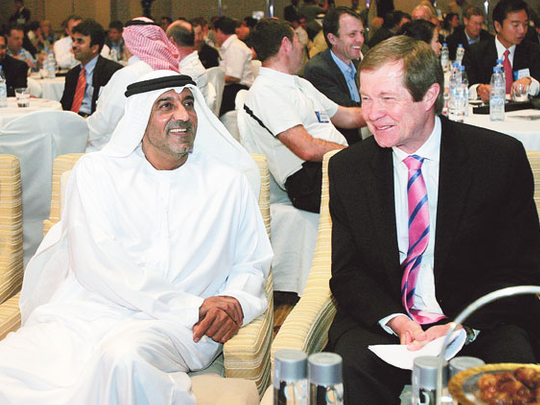
Dubai: The UAE's top golf courses have witnessed a decline in annual memberships as more players opt to switch between venues.
Senior officials from some of the country's top golfing establishments believe the sport's business model in the region has to change in order for companies to maximise revenue in an increasingly congested marketplace.
The main theme of this year's Golf Business Forum, which opened in Dubai yesterday, was new opportunities in the GCC as delegates discussed the challenges facing the industry amid the backdrop of a difficult economic climate.
"We have seen a significant reduction in membership numbers at Emirates Golf Club. A couple of years ago, we had a waiting list of around 600 people and they faced a six- to seven-year wait," said Christopher May, General Manager of Dubai Golf, a leisure subsidiary of asset management group wasl.
"That has totally changed and we have noticed an increase in the number of golfers who would rather pay green fees on the day; they are not a member of one particular club," he added.
Business model
Dubai Golf manages Emirates Golf Club and Dubai Creek Golf and Yacht Club, two of Dubai's most famous courses. An annual membership at Emirates costs Dh29,000 and at the Creek Dh23,000.
"The business model of golf in the region is changing and we have to make sure that members get value for money. We have recruited a membership services manager at Emirates Golf Club for the first time; we want to ensure our members are happy and we want to ensure they continue their membership for another year," May said.
The conference looked at the main issues facing golf in the GCC and panellists discussed the main issues raised in the latest Golf Benchmark Survey by accountancy firm KPMG.
The report said the economic downturn had affected the demand for golf in the region with the UAE suffering more than most due to the increased number of competing courses.
"It is all about market share and consumers now have more choice in the UAE than ever before," said Chris White, General Manager of Aldar Golf, the developers of the new Yas Links course in Abu Dhabi, which has an annual membership fee of Dh28,000.
"The danger is that we are all very competitive and that drives down green fees. We do not have the membership numbers that we anticipated at Yas Links but we do have a good portion of the green fee market share," he added.
"We have got to be self-sufficient and maximise every revenue stream, including membership rates, because this is a very challenging economy. We face significant operating costs in this part of the world but we have created global icons, such as the clubhouse at Abu Dhabi Golf Club, that have put the UAE on the map as a golfing destination," he added.
In 2010, the average revenues achieved at 18-hole golf courses in the UAE totalled $8.6 million (Dh31.5 million), according to the KPMG report.
In terms of profitability, only half of the participating GCC courses reported a positive gross operating profit last year.
Peter Harradine, the Mana ging Director of Harradine Golf, said: "Before the crash in 2008, we were working on 47 projects but in the space of two months we lost 20 of them due to the financial crisis.
"The Middle East is a very important market but we did not have any enquiries [for new projects] in this region for two years. Last year, we had 20 enquiries and we have just received seven new jobs so the market is definitely picking back up again.
"We are rebuilding the golf course at Nad Al Sheba, which is now Meydan, and we also have projects in Tunisia, Egypt and Oman."











